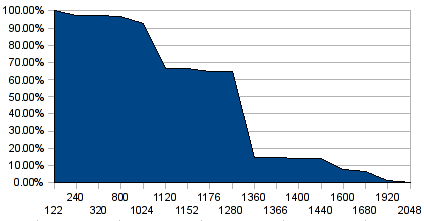The Future Of Things
In which we return to Mario Reading and his inability to admit to his mistakes
Flicking through my viewing figures and my search keywords, I spotted one that caught my eye:
Is it true that nostradamus predicts that George W Bush is going to get assassinated?
Well, no. No, I have to say, it isn’t. It has been claimed that he did, though, by a writer called Mario Reading. As I do try hard to maintain this blog’s position as the top source for Mario Reading information on the internet, I thought I’d better mention it. Mr Reading’s prediction is based on this quatrain by Nostradamus:
The successor will avenge his handsome brother
He will take over the realm under cover of vengeance
The obstacle slain, his dead blood seethes
Britain and France will hold together for a long time
This is Reading’s own translation. He interpreted it as: a powerful world leader, whose main international ally is the British government, undergoes an assassination attempt; and this will lead to Britain aligning itself more with the EU. Oh, and, all this will take place in ’06.* He stepped carefully around the issue of naming the leader in print:
One of many possible targets, of course, might be US President George W Bush
but this is after mentioning that “under cover” in the quatrain, souz umbre in the original, probably means something like “under a bush”. Not to mention, Reading was rather less guarded when, as part of the pre-publication publicity, he went on the telly and said specifically that it was George W Bush that he meant.
Needless to say, none of this has come true, as you might have noticed, and the time for Reading’s prophecy to apply is well past. Nevertheless, he’s since declared that his prophecy did indeed come true! He wrote on his blog that:
I’m very sad to say that the predicted assassination did indeed take place, with the murder, on the 27th December 2007, of Benazir Bhutto. … The prophecy was further vindicated by the fact that both of Benazir Bhutto’s brothers had also died under unnatural circumstances, and that their brother-in-law, Benazir Bhutto’s husband, was elected President of Pakistan. … I rest my case.
Hang on a minute there, Mario! Yes, I know, “handsome brother” might be a mistranslation of “brother-in-law” – but in your prophecy there, it’s the brother who’s been attacked. Benazir Bhutto may well have been assassinated, but she definitely was no man’s brother. Having said, back in 2005, that you thought George W Bush was going to get attacked, it’s a bit misleading of you to go back and say “aah, someone else was assassinated, see, I was right all along”. Particularly as that someone else doesn’t at all fit the prediction you wrote.
I’ve been meaning, for a while, to write a full and proper critique of Reading’s book; something which is only going to get easier over the years as fewer of his prophecies come true. I’ve had more important things to write about, but I’m getting round to it. Once I have, I’m tempted to go on to Peter Lemesurier, who, in the mid-90s, predicted, using Nostradamus and astrology,** that an Islamic army would have invaded Europe from North Africa by now.*** He’s still writing books, and his website is actually pretty useful, despite not acknowledging his past predictive failure. But, on the other hand, there is a whole world of future-predictors to debunk out there. All I can ever do is scratch the surface.
Update, September 2nd 2020: Mario Reading died in 2017 and his website disappeared from the internet, so you will just have to take my word for it that the text above is an accurate quote. Sadly, he won’t be around to see the rest of his predictions fail to come true, as indeed they probably will not.
* Reading has his own dating scheme which links the year to the number of the prophecy; according to that, the prophecy applies to a year ending in 06, although he goes on to link it, because of his interpretation, to the vaguer period “2006-2008″.
** which does make sense in a way, as Nostradamus was basically an astrologer himself. Le Mesurier sets the dates of his predictions by looking at repeating astrological cycles.
*** This is why, as I wrote a while back, the work of people like Reading and Le Mesurier really needs a Ron Howard voiceover, to say things like “It hasn’t”.

 Home
Home






